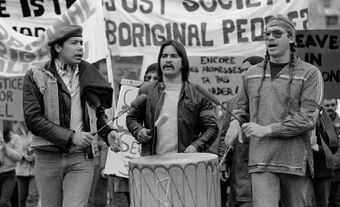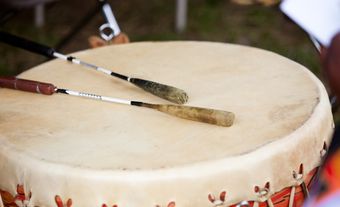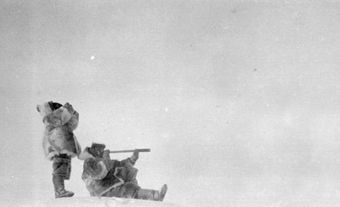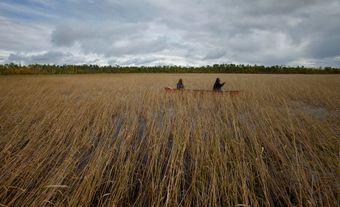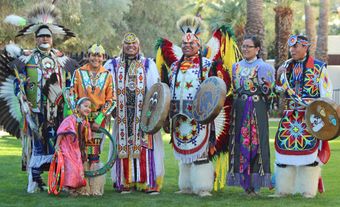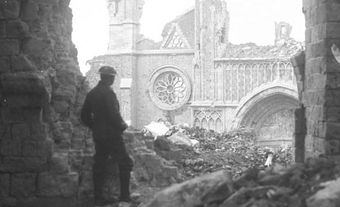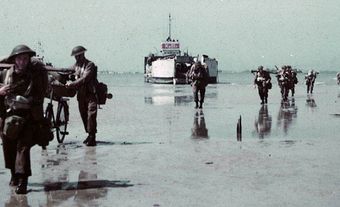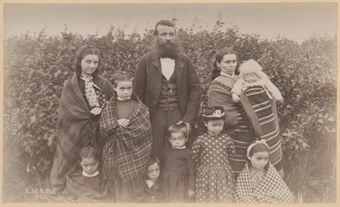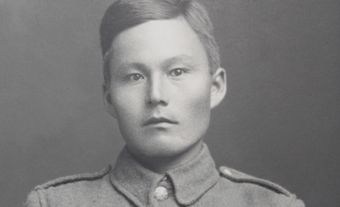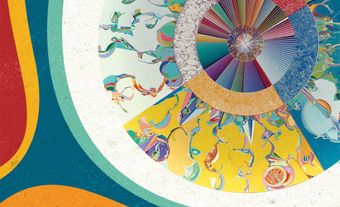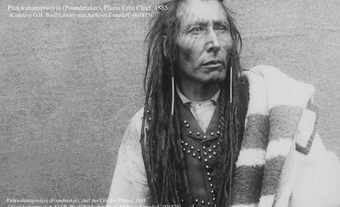Thousands of Indigenous peoples served in the Canadian military forces in the First World War and Second World War; most were volunteers. On the home front, most Indigenous communities participated in the national war effort in diverse ways. The world wars were dramatic events for Indigenous peoples in Canada (see Indigenous Peoples and the First World War and Indigenous Peoples and the Second World War). Conflict offered these marginalized populations opportunities to renew warrior cultural traditions, reaffirm sacred treaties, prove their worth to indifferent non-Indigenous Canadians, break down social barriers and find good jobs.
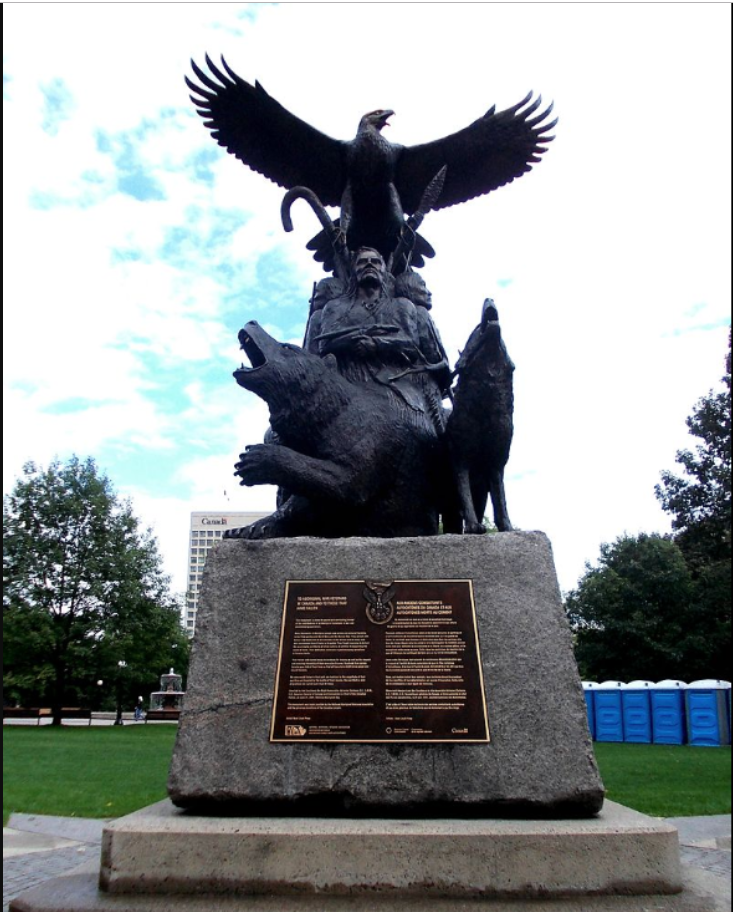
Volunteering for War
Officially, about 4,000 First Nations soldiers (Status Indians) served overseas in the First World War, while 4,250 First Nations soldiers served in the Second World War. Recent research has revealed that thousands more First Nations, Métis, and Inuit soldiers (such as John Shiwak from Labrador, who served in the First World War) volunteered for service without self-identifying as Indigenous. At least 72 First Nations women also served in the armed forces. In total, more than 500 Indigenous soldiers died and many more were wounded or captured in the world wars.
On the home front, most Indigenous communities participated in the national war effort in diverse ways, by donating money and working for the war industry. Despite their contributions and sacrifices, however, Indigenous peoples remained marginalized, without basic civic rights like the right to vote (see Indigenous Suffrage).
Did you know?
According to Yann Castelnot, a Quebec-based amateur historian, 14,900 Indigenous people served with the Canadian armed forces during the First World War and Second World War, thousands more than previous estimates. For more than 20 years, Castelnot has been researching Indigenous men and women that have served with British, French, Canadian and American forces since the 17th century.
Legacy and Memory
After the First World War (1914-18), there was little recognition given to Indigenous peoples for their contribution to the war effort. Unlike during the First World War, however, Canadians acknowledged Indigenous participation during the Second World War (1939-45). As the country looked to create a new order in the aftermath of the war, many Canadians suddenly looked at their country’s treatment of Indigenous peoples and did not like what they saw. In this brief climate of recognition, Indigenous leaders, veterans groups and many other Canadians pressured the government for reform and citizenship rights, leading to a Parliamentary review in 1946 and major amendments to the Indian Act in 1951 (though voting rights were not granted at the federal level until 1960; see Indigenous Suffrage).
Thereafter, Indigenous veterans were largely forgotten until they began to organize and campaign for recognition of their sacrifices and restitution for grievances over veterans benefits from the 1970s to the 2000s. Perseverance paid off, with a consensus report accepted by both First Nations veterans groups and the government in 2001, followed by an offer of a public apology and offer of compensation in 2003. Traditionally, Métis and Inuit veterans’ grievances have not received the same hearing. In recent years, however, Indigenous veterans have gained much greater recognition in local and national acts of remembrance, including Aboriginal Veterans Day on 8 November (inaugurated by Winnipeg’s city council in 1994) and a National Aboriginal Veterans Monument in Ottawa (unveiled in 2001).


 Share on Facebook
Share on Facebook Share on X
Share on X Share by Email
Share by Email Share on Google Classroom
Share on Google Classroom
